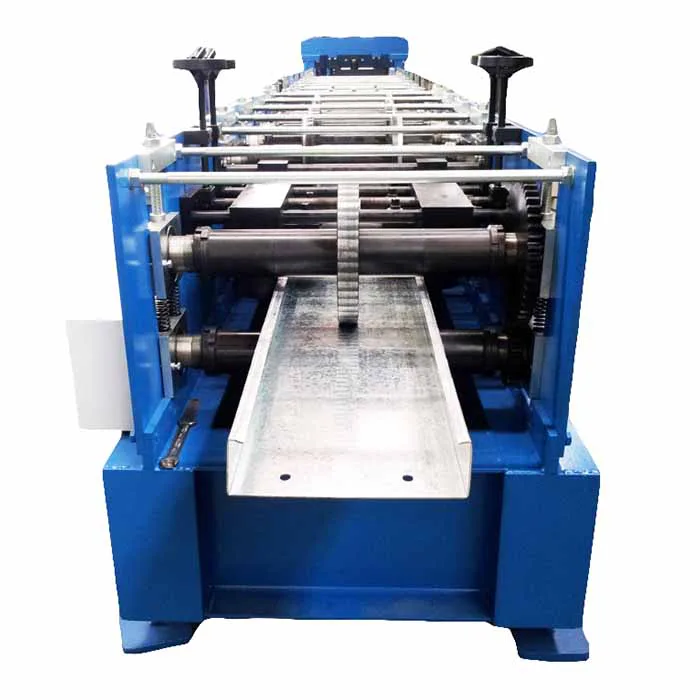
Troubleshooting Common Issues with Metal Punching Machines
- By:Metmac
- 2024-10-31
- 941
Troubleshooting Common Issues with Metal Punching Machines: A Comprehensive Guide
Introduction:
In the realm of metalworking, the precision and efficiency of punch machines are indispensable. However, even these robust machines can encounter occasional hiccups that can disrupt operations and hinder productivity. This article will embark on a comprehensive journey into the most common issues that plague metal punching machines, providing a roadmap for troubleshooting and rectifying these challenges.
1. Punching Errors:
Punching Holes Too Small or Large: Check the punch and die clearance. Incorrect clearance can result in variations in hole size. The ideal clearance is 5-8% of the punch diameter.
Burring: Ensure that the punch and die are sharp and free of burrs. Dull or damaged tools can produce ragged edges on the workpiece.
Tearing of Material: Use a punch with a proper rake angle. Excessive rake angles can cause material tearing.
2. Machine Issues:
Motor Overheating: Monitor the motor temperature regularly. Overheating can indicate a faulty motor or inadequate ventilation.
Excessive Noise and Vibration: Inspect the machine for loose bearings, gears, or belts. Tighten or replace worn components.
Alignment Problems: Ensure that the punch and die are properly aligned. Misalignment can result in uneven punching and tool damage.
3. Material-Related Issues:
Punching Holes in Hardened Material: Use specialized punches and dies designed for hardened materials. Standard tools may not withstand the increased hardness.
Punching Thick Material: Gradually increase the punching force or use a multiple-hit punching process to avoid overloading the machine.
Punching Holes Too Close to the Edge: Maintain an adequate distance from the edge of the workpiece to prevent material distortion.
4. Tooling Issues:
Punch and Die Wear: Inspect punches and dies regularly for wear and tear. Replace worn tools to ensure optimal performance.
Tool Clamping Problems: Ensure that the tools are securely clamped in place. Loose clamping can result in punching errors or machine damage.
Incorrect Tool Selection: Select the appropriate punch and die size and shape for the desired hole diameter and material. Using the wrong tooling can lead to poor results.
5. Safety Concerns:
Flying Metal Chips: Install safety guards to prevent flying metal chips from injuring operators.
Pinch Points: Avoid placing hands near the punching area to prevent fingers from getting pinched.
Electrical Hazards: Ensure that the machine is properly grounded and inspect for any exposed electrical wires or components.
Troubleshooting Steps:
1. Identify the issue and gather relevant information
2. Refer to the troubleshooting guide or manufacturer’s manual
3. Check for obvious visual defects or loose components
4. Perform a diagnostic test if possible
5. Contact the manufacturer or a qualified technician if necessary
:
Troubleshooting common issues with metal punching machines requires a combination of technical knowledge and practical experience. By understanding the potential problems and following the troubleshooting steps outlined in this guide, you can minimize downtime, enhance productivity, and maintain the integrity of your punching machine. Remember, safety should always be the top priority when operating metalworking equipment. By addressing issues promptly and effectively, you can ensure that your punching machine operates at its full potential for years to come.
-
Metal Sheet Forming Machine: The Engine of Modern Fabrication and the METMAC Standard
2025/12/30 -
Laser Cutting Machine for Steel Plate: Precision Redefined for Modern Fabrication
2025/12/30 -
Metal Curving Machine: Shaping Strength with Precision and the Art of METMAC Engineering
2025/12/30 -
Shear Metal Cutting Machine: Precision, Power, and the METMAC Standard
2025/12/30
-
Advanced Sheet Metal Rolling, Laser Cutting, and Folding Machines for Precision Fabrication
2025/10/31 -
High-Performance Sheet Metal Bending and Cutting Machines for Modern Fabrication
2025/10/31 -
High-Quality Sheet Metal Equipment for Sale: Efficient Solutions for Modern Manufacturing
2025/10/31 -
High-Performance Sheet Metal Equipment for Sale: Forming and Shearing Solutions for Modern Fabrication
2025/10/22
-
Improving Accuracy in Metal Fabrication with Laser Metal Shear Machines
2024/05/11 -
Latest Technological Advancements in Rectangular Duct Machines
2024/05/11 -
Integrating Automation with Rectangular Duct Machines for Enhanced Productivity
2024/05/11 -
Metal Shear Machines- Essential Tools for Precision Metal Cutting
2024/05/11
-
A Guide to the Latest Innovations in Sheet Metal Folding Machines
2024/11/29 -
Key Features to Consider When Investing in a Sheet Metal Folding Machine
2024/11/28 -
Enhancing Precision with Advanced Sheet Metal Folding Machines
2024/11/27 -
How to Choose the Right Sheet Metal Folding Machine for Your Workshop
2024/11/26







